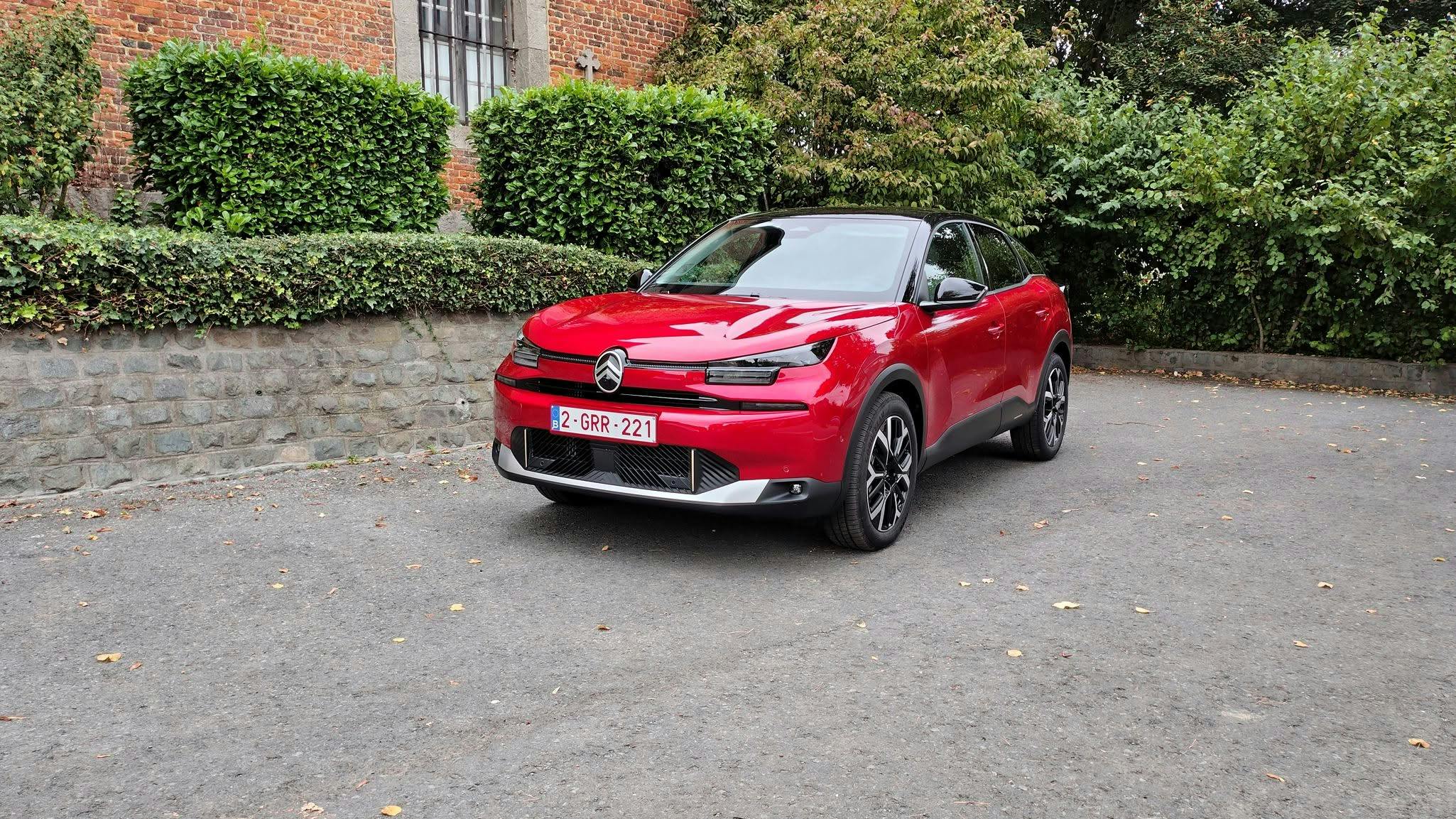
TAGTIK NEWS - TO THE POINT
Citroën C4 test: transition to hybridization

The Citroën C4's facelift brings a new hybrid engine. However, it has its own unique hybrid features. A road test of the 145 hp "hybrid" C4 explains.

It's not just the ë-C4 that has an electric motor in the C4 range. Citroën has added a "hybrid" solution to the sedan's thermal catalog. The French brand has chosen a solution halfway between microhybridization and self-recharging. The electric motor produces "only" 28 hp and is housed in the 6-speed robotic gearbox. It complements the 136 hp (100 kW) 1.2-liter 3-cylinder gasoline engine. The combined power is 145 hp. Why question hybridization? Because, although the electric motor is not a simple assistance system like in an MHEV, it cannot drive the French car for very long or often like an HEV.

How many liters?
Can this art of compromise reduce the C4's fuel consumption? In any case, the kilometers covered behind the wheel have allowed us to observe several things. Sometimes, it's true, the evocative silence indicates that the wheels are driven by electricity. Likewise, sometimes you can feel the 3-cylinder engine restarting. Proof that it had been put on hold. During a rural trip of about sixty kilometers, the electric motor was in operation for 22% of the trip, with a fuel consumption of 5.7 l/100 km.

Basically, it worked when the accelerator pedal was released, to give a boost or to move the car very slowly. On the highway, it is also possible to drive around 5.5 l/100 km. Adding city driving, we can expect an average of less than 6 l/100 km in real autumn conditions. Officially, WLTP consumption is 4.7 l/100 km.

Comfortable
Otherwise, we naturally find the same characteristics as the ë-C4, already tested on Tagtik. The undeniable strengths of the Citroën C4 lie in the comfort of the "Advance Comfort" seats – not available with the heated seats option in Belgium – and its ability to absorb road shocks. Its shock absorbers with hydraulic stops absorb imperfections with great ease and efficiency. Lighter than the ë-C4, the C4 seems even more efficient on uneven surfaces. However, it does experience slight body roll. Nevertheless, its handling is sound in all the circumstances in which we drove it, in the countryside, in the city, and on the highway.

The cabin is spacious with a layout that meets expectations. Only the rear-seat passenger—as is often the case—will have difficulty finding this car comfortable. The 380-liter trunk is a bit small for a car that's meant to be a family car. It's a shame, however, that the display on the digital instrument panel is completely outdated. It's an option. However, it's essential to take advantage of the augmented reality display.

The central screen doesn't look state-of-the-art. And yet, there's voice control powered by ChatGPT. The AI can thus receive your instructions for many operations, which are often accessible with physical buttons. Because Citroën hasn't succumbed to the all-touch approach.

Extraordinary
On the outside, the facelift is evident in the abandonment of the X-shaped design in favor of a new look and horizontal taillights. The C4, however, retains its distinctive, slightly coupe-like, high-riding sedan look, without being tall enough to be an SUV. There's also the small spoiler in the center of the tailgate, slightly reducing rearward visibility. There's a rearview camera. But, strangely enough, Stellantis struggles to provide a complete panoramic view at all times. Sometimes, gray streaks appear where the curb or roadway should be. Not practical. So, you have to rely on your eyes, your sixth sense, and the parking sensors.

Fortunately, the mechanics under the hood add fuel to the fire of this restyling. The classic 0-100 km/h acceleration takes 8 seconds. Suffice to say, it has plenty of power to hurtle forward. And it could reach 210 km/h on the Autobahn in Germany. This hybridization therefore gives the C4 a little more punch and speed, without making it ostentatious and fuel-hungry. Isn't that what we want from a hybrid?

Pricing
There is another hybrid option for the C4, limited to 110 hp. This one starts at €27,440 in Belgium. But to fully enjoy the car, especially on motorways and hills, it's better to turn to the Citroën C4 Hybrid 145. In the Kingdom of King Philippe, it's available from €29,490. To get our two-tone C4 Max, with the appropriate options, you'll have to pay nearly €36,000. It's difficult to be more precise, as the configurator was down at the time of writing this review. In the Grand Duchy of Luxembourg, the entry-level price of the C4 Hybrid 145 Max is €29,966 without adding the options illustrated here. It's impossible to write more at the moment; in the Grand Duchy of Luxembourg, too, the configurator didn't want to work. We will update the information as soon as possible...

In France, the Citroën C4 Hybrid 145 Max is priced at €33,960. With the equipment of the model tested, the final price is €36,100. In Switzerland, the Citroën C4 Hybrid 145 Max costs CHF 33,300. With the options of our test model, plus the winter kit with heated seats, which are not available in all markets, you will have to pay CHF 36,700. Finally, in the Netherlands, this C4 Hybrid Max costs a minimum of €37,150. Adding the options, the price reaches €39,300 (with the winter pack with heated seats).

(Olivier Duquesne – Source : Citroën – Photos : © Olivier Duquesne)
LATEST NEWS

Jafar Panahi Wins New York Award and is Sentenced to Prison by Iran

Born on December 2: Peter Kingsbery, founder of Cock Robin with firebrand Ana LaCazio

Born on December 1: Julee Cruise, "Twin Peaks'" haunting voice

Born on December 1st: Alain Bashung, French rock poet who waited a long time for success

Born on November 30: Billy Idol, the (kind) rebel of Generation X

Born on November 28: Randy Newman tells stories and makes movies
Quick links